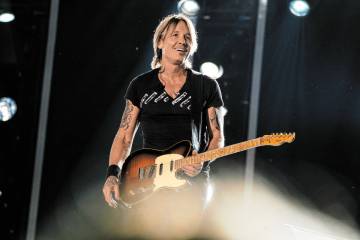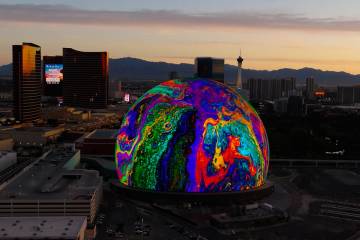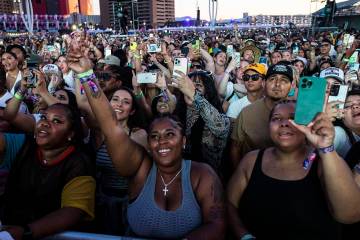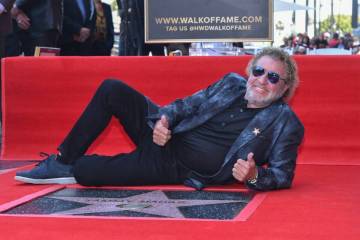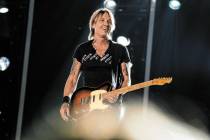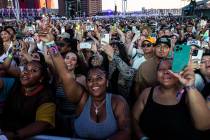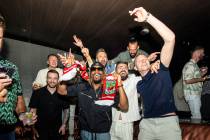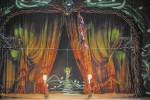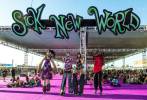Building a successful music fest is a labor of love
It’s all over, save for the tinnitus.
Psycho Las Vegas, a three-day heavy metal marathon that recently rattled the Hard Rock Hotel, was a total blast, both in terms of entertainment value and the impact that it had on eardrums.
Will it be back next year?
We hope so, and fest organizers have intimated that it will be.
In the meantime, Psycho’s debut begs the question: What does it take to build a successful music fest in Vegas?
To get some answers, we turned to two dudes who’ve done it: Tom Ingram, founder of the Viva Las Vegas rockabilly weekender, which will become the first local music fest to last two decades when it returns to The Orleans next spring, and Michael Gordon, head of the Las Vegas Death Fest, which has become an international draw for those who favor the heaviest of the heavy, having completed its eighth incarnation in June at LVCS.
Though Viva Las Vegas and LVDF couldn’t be more removed from one another in terms of the audience they attract — pompadoured ’50s fetishists versus musical gorehounds with iron stomachs — they’ve built their audiences in very similar ways: by targeting a highly specific style of music, creating a familial environment for fans, and never wavering from their core sound.
When asked about the key to developing a lasting music festival, Gordon doesn’t even utter a word.
Instead he points to his heart.
It’s a telling gesture: Even if Viva Las Vegas and LVDF have become successful — both are moneymakers that have never gone in the red — they remain labors of love overseen by scene lifers who know their audience intimately, because they’re indivisible from it.
“It’s like a huge family reunion every year,” Gordon says over breakfast, sitting in a private booth at the Omelette House, which he shares with former Mayor Oscar Goodman.
He estimates that 85 percent to 90 percent of LVDF’s annual draw now consists of returnees.
The Viva Las Vegas crowd is also heavy with repeat customers, though Ingram says that he doesn’t bank on seeing the same faces year in, year out.
“I don’t assume everyone is going to come back,” he explains. “Every year, I treat it as a brand-new event. I think, ‘Would I pay to go that event?’ I look at it more from a customer’s perspective.”
Both Gordon and Ingram stress the importance of genre discipline, of not straying from a clear musical identity when attempting to build a event. Perhaps the most crucial component of building a successful festival, at least initially, is catering to a core audience and solidifying a base. One of the biggest temptations — and pitfalls — when vying to grow a festival is to book a broader array of bands in order to draw a broader audience.
The problem is, this tends to have the opposite effect.
“I’ve seen it at so many events,” Ingram says. “They follow the money as opposed to the event, then they basically ruin it because they’re trying to do too many different types of music. If you think each type of music is going to draw, just as an example, a thousand people, it doesn’t, because out of that thousand people who would come to see that type of music, more than half of them are going to be put off by the other styles of music. So you actually turn people away.”
Citing his own fest, Ingram points out that it’d be easy for him book any number of popular punk rock bands loosely associated with rockabilly’s outer fringe. Were he to do so, however, he’d risk alienating the die-hards.
“If I was to book a band like that, then I’m going to lose my authentic rockabilly crowd,” he says. “And then the punk crowd is going to show up and not like seeing the rockabilly crowd.”
By cultivating a specific crowd, Ingram and Gordon have created events that attract masses of like-minded individuals, lending their fests a welcome air of inclusiveness.
At LVDF, the room is filled with a sort of heavy metal camaraderie, with ragers from around the world bonding over sounds repulsive to most.
At Viva Las Vegas, it’s like stepping into a time warp back to the earliest days of rock ’n’ roll, back when that hard-swingin’ sound was just beginning to abhor parental units.
How did Psycho Las Vegas compare during its first go-round?
Well, the lineup was stellar, but may have been a bit too diffuse for some, as hard-to-categorize bands like Drive Like Jehu and A Place To Bury Strangers, who owe little to hard rock orthodoxy, drew scant crowds despite scintillating performances.
This being acknowledged, there was a sense of cohesiveness to the weekend as a whole, as it felt more like one big party than just a series of individual performances.
Ultimately, this will be the key to Psycho Las Vegas’ future: not just booking a bunch of killer bands, but tapping into a culture en route to creating a culture of its own.
Above all else, this is what gives a festival its magic, that feeling of being in a place where you belong, where outsiders can become insiders, if only for a few days.
“As one person once said, they spend the whole year being the odd person out,” Ingram says, recalling a fan encounter, “but for one weekend, they feel normal.”
Jason Bracelin’s Sounding Off column appears on Tuesdays. Contact him at jbracelin@reviewjournal.com and follow @JasonBracelin on Twitter.





